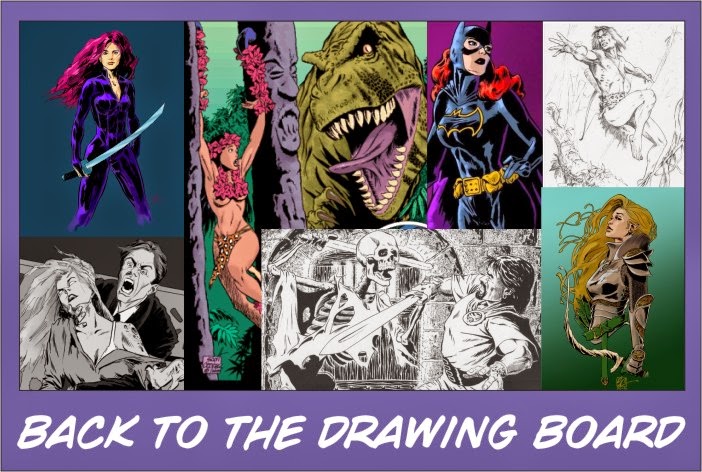This technique has been used by artists for centuries, and it's very straightforward. Create a grid over your original image, create a second, matching grid, on your transfer surface, and match the intersection points.
There is one aspect of this technique that must be kept in mind, and is very important. To make an accurate transfer, your original and transfer must be in the same proportions! Here is why:
This drawing of a bowl of apples has a grid placed over it; the image can conveniently be broken down into a grid of 3 rows by 4 columns of squares. But if I place that 3x4 grid on a differently shaped rectangle, the transfered image will be distorted:
There is an easy way to ensure that your duplicate is in the same proportion as your original. Simply draw a diagonal line from corner to corner of your original, and extend the line beyond its border. Any rectangle that you can make with the corner on the same diagonal line will be in the same proportion as the original.
These three rectangles are all the same proportion.
The square grid above is only one possibility. Any regular, easily reproduced grid will work. The rest of this tutorial will use another grid shape, one of crosses, sometimes called the Union Jack. To make this grid, start by drawing diagonal lines from corner to corner; this will always give you the centre point of the rectangle. Carefully measure to find the mid-points of the sides, or use a T-square and set sqares to draw right-angle lines through the centre point. Then join the midpoints diagonally as well. You should end up with this pattern:
When you draw the grid on your original, you might consider placing a sheet of tracing paper or acetate on your drawing or photo first. If you are copying a photo, perhaps place it in a plastic page protector and draw your grid on that. My example uses a coloured line grid to show up against the colour of the photo; I found that black lines disappeared into some of the dark shadows.
Next, look for the places where the edges of the objects (or the lines of your drawing) intersect with the grid. I have marked a number of them here:
Begin to transfer these intersection points to your copy grid. This is all about proportion; does this point fall about a third of the way along this line, is this line half the length of that one? Be thoughtful about this. Although this is a mechanical transfer technique, your must still give careful consideration to your placement of these points.
Here, I've started placing my points. You can already see the beginnings of the shape of the pitcher. From here on, it becomes a little bit of connect-the-dots, and a lot of careful consideration of the directions, angles and curves of the lines you are copying.
Here is the rough beginnings of the layout. There are some inaccuracies, but those will be smoothed out in the finish.
This is the final rough layout of the transfer, but I wouldn't consider it a finished drawing. If you were doing an oil or acrylic painting, this probably has enough information for you to begin. Be careful if you want to do this for watercolour - make sure you use a soft pencil and draw very lightly, so as not to damage the surface of the paper, especially when you erase the grid. Be gentle. If you were planning on a fully rendered drawing, now is the time to erase the grid and refine your shapes further and begin adding your values.










No comments:
Post a Comment